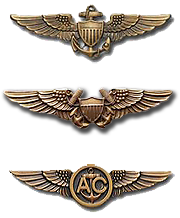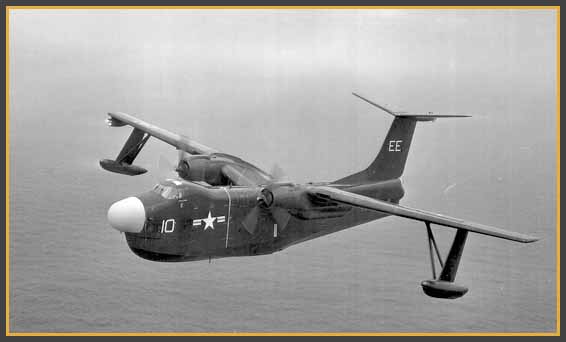Freeze Over - 1958

“One Fineart, Aerology advises Conditions Not Right For A Freeze Over... Over.”
" Fineart, The Fair Wing 5 Duty Officer Advises The Sound Has Never Frozen Over, Over.”
“Tower, 1 Fineart, Yeah, But… .. Naaahh, Out.”
The wind was too strong to enable beaching of the P5M from VP-45 when it arrived from Bermuda at about 2330 Sunday so the crew was advised the plane would have to spend the night attached to a mooring buoy. The flight’s purpose was to transport the Naval Station Bermuda’s stellar basketball team to the regional playoffs and to make the routine “bread and eggs” run for the goodies and military supplies not available in Bermuda. After the team had departed for terra firma, the crew, including LTJG Agnew PPC, LTJG Hugh Flanagan, LTJG Jim Dilweg and five members of crew 8, had a rough night. The next morning, lower temperatures, high winds, rough seas and the fact that the oil had congealed in the engines, preventing their starting, precluded beaching all day Monday. It was a weary crew that was relieved on the buoy that Monday afternoon. 
LTJG Bestul had arrived earlier at NAS Norfolk aboard USS Grampus (SS 523), having served a week as an air observer for VP- 49’s ORI. He, along with two aircrewmen who had been attending school there, was awaiting transportation back to Bermuda. The following is his recollection of the events that led to this unique sea story.
I arrived in Norfolk aboard the U.S.S. Grampus (SS 523) on Friday, 22 Feb 1958 after serving a week as an air observer for VP-49’s ORI, (That’s another story!) and awaited pickup along with 2 aircrewmen who had been attending school there. Frank Agnew and Crew 8 arrived on the evening of Sunday, 24 Feb in LN-1. Because of the cold and windy weather, several members of the beaching crew had been sent to the dispensary suffering from exposure after beaching a previous arrival, so the decision was made to put LN-1 on a buoy until the next day. On Monday Crew 8 had already put in a full day and night so I volunteered to sit on the buoy along with 2 aircrewmen whose identity I can’t be sure of. The line handling boat making the transfer collided with the port float in the rough seas, holing it. We immediately transferred fuel into the right wing to keep the damaged float out of the water. Due to the freezing temperatures and the high seas, ice began building up on the starboard float and struts (this is evident in the picture). As that float became heavier we transferred fuel back to the port wing to keep the starboard float from sinking. It was not a pleasant evening as the wind was howling, the seas high and the ride rough. About 2 AM, with everything under control and the airplane riding the rough seas pretty well, I lay down on the flight deck for a little nap. About 4 AM I awoke with a start, noticing absolutely no movement in the airplane — and silence. I then heard one of the crewmembers say, “We had better wake up Mr. Bestul?” I leapt up and bounded down the flight deck ladder, visualizing our being aground. At the bottom of the steps, I encountered the crewmembers pointing out the refueling hatch. I couldn’t believe the sights. The wind was almost calm and we were surrounded by ice! Willoughby Spit had frozen over! It wasn’t too thick but the wave action was causing the ice to break up and slide over itself making some areas quite thick and endangering our thin hull.
I called the tower (our APU was running so we had electricity and heat) and had them advise FAIRWING 5 of our predicament. Shortly thereafter, the reply arrived: Aerology advised the conditions are not right for a freeze over and the FAIRWING 5 duty officer advised the Sound has never frozen over. Obviously they didn’t believe us.
There must have been some red faces ashore when the sun came up because we were frozen in! Sending boats with water cooled engines out to us didn’t work since water was freezing in their intakes. All day long they struggled with the problem of getting us beached. We sat there in our warm airplane, with plenty of food aboard, watching this whole show and listening to the local news items about the poor cold, hungry crew in their “giant flying boat” frozen in the ice. Local newspapers took pictures from airplanes circling us, one of which is the picture above.
Finally a yard craft with an air cooled engine made it out to us and attached a tow line. The picture was taken during the tow. We were hauled out just about sunset. To add insult to injury, someone with an ax, trying to chip ice off the starboard float, holed it! Excerpts from the newspaper account stated ….. Patrol Squadron 56 volunteered its services to help the P5M, stranded in Willoughby Spit.
Using one of their amphibious Ducks, a WWII DUCK with a sealed cooling system, 12 men from VP-56 dressed in foul weather gear and equipped with fire axes managed to get alongside the plane. In a small wherry, a 12 foot plastic boat, the men were able to get close enough to the hull to use the axes on the ice. It was estimated that over 1000 pounds of ice were removed from the right wing float alone. With the help of a NAS YSD (Mary Ann) the P5M was towed to clear water where the beaching gear, which was also encrusted with ice that had to be removed with axes, was attached. Nearly 48 hours after take-off, LN-l finally made the ramp! The newspaper related that the existing weather was the worst in the area for the past 25 years. ALCON concur!
Note: Both Frank Agnew and Jim Bestul contributed their recollections and other data for this story. Thank you both!
Send questions, comments or suggestions regarding this website to: vp45assoc@vp45association.org
Copyright © 2005 PATRON FOUR FIVE ASSOCIATION


